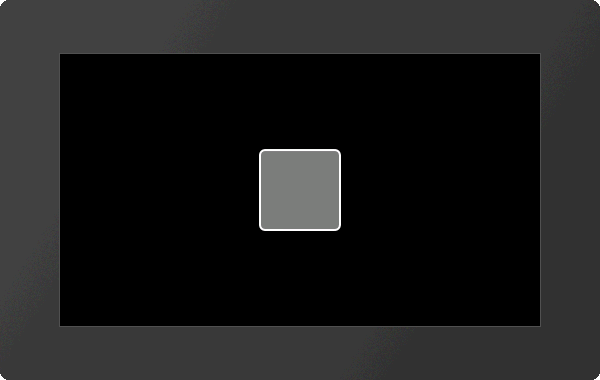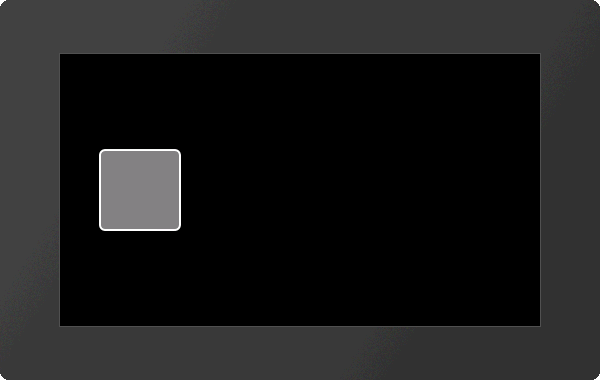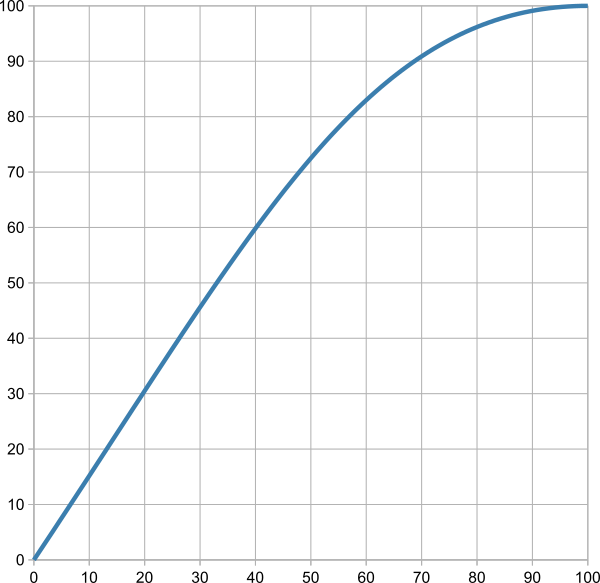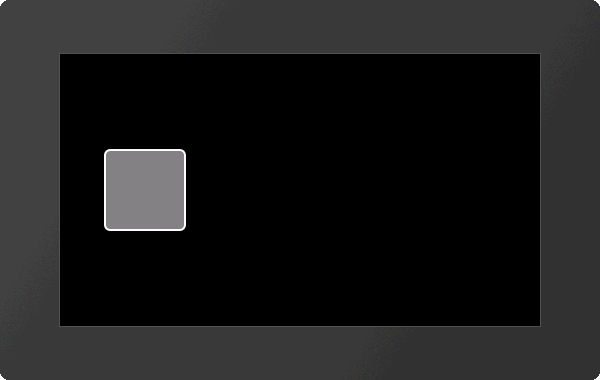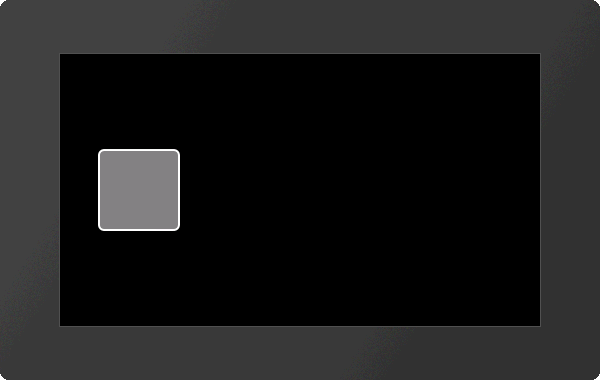Action / Animation #A
Command group to animate objects, e.g. Show, fly away, rotate or fade in or out.
Define and set animation
Start/end animation definition (Action Define Condition) |
Start |
|
Define animation absolute (Action Object Absolut) |
Obj-ID, Action1, ..., ActionN |
|
Define animation relative (Action Object Relative) |
Obj-ID, Action1, ..., ActionN |
|
Set animation type and time (Action Object Type) |
Obj-ID, Type, TotalTime(100), Start (0), End(0) |
|
Stop animation (Action Object Stop) |
Obj-ID, Stop(0), Abort(0) |
|
Delete animation (Action Object Delete) |
Obj-ID, ..., Obj-IDn |
Define action curve
Set action curve (Action Curve Define) |
CurveNumber, x1, y1, x2, y2 |
|
... #PPP 4,<P:picture/Coaster.evg>,25,20,8,50,30,0 #APD 1,-26,20,?L 150,20,?Q 250,20,250,150,?Q 250,240,150,240,?Q 75,240,75,175,?Q 75,125,150,125,?S 231,126,278,166,320,200,?Q 355,223,400,225,?L 505,225 #AOA 4,154,0 #AOA 4,354,0 #AOT 4,4,400 ... |
Define and set animation
Start/end animation definition
#ADC |
Start |
If the animation definition is within a macro, this command is not necessary because a macro is always processed completely before the screen content is redrawn.
Start |
|
0 |
End animation definition → start all new animations |
1 |
Start animation definition → no animation is executed |
#AOA |
Obj-ID, Animation1, ..., AnimationN |
#AOR |
The command defines an animation for an object. The Animation parameter specifies the animation. Depending on the command, absolute #AOA or relative #AOR values are transferred.
The command defines an animation for an object. The Animation parameter specifies the animation. Depending on the command, absolute #AOA or relative #AOR values are transferred.
Animation |
||||||||
Change position |
100+ 1..10 |
x, y |
|
... #AOA 1,104,400,136 ... |
||||
The object moves in a straight line to the specified point (x, y). The course of time is specified by the action curve (1..10). |
||||||||
Change scale |
200+ 1..10 |
ScaleX, ScaleY |
|
... #AOA 1,204,200,200 ... |
||||
The object size is changed linearly in percentage to the original size. The course of time is specified by the action curve (1..10). |
||||||||
Change opacity |
500+ 1..10 |
Opacity |
|
... #AOA 2,504,0 ... |
||||
The object changes the Opacity. The course of time is specified by the action curve (1..10). |
||||||||
Change color channel |
600+ 1..10 |
R, G, B |
|
... #AOA 2,604,-27,-1,18 ... |
||||
Change the color channels Red, Green and Blue. The color channel of the target color is determined relative to the parameters passed. The parameters (R, G, B) are transferred as percentage values in the range from -100 to 100. Example: Assume that the output color should be changed from RGB (50.0.0) to RGB (200.0.0). The target color has only changed in the red component. The difference in the red component is 150. The value has to be converted into a percentage value:
#AOA 1,604,118,0,0 The changing progress is specified by the action curve (1..10). |
||||||||
#AOT |
Obj-ID, Type, TotalTime(100), Start (0), End(0) |
The TotalTime (in 1 / 100s) of the animation includes a delayed Start (in 1 / 100s) and the End (in 1 / 100s). The Type specifies the animation type:
Typ |
|||
1 |
Appear |
|
|
2 |
Disappear |
Object is deleted |
|
3 |
Object becomes invisible |
||
4 |
Change (once) |
|
|
5 |
Cyclical |
|
|
6 |
PingPong |
|
|
The animation starts automatically after the command. However, if the #ADC command was called beforehand with parameter 1, the animation is only executed after #ADC 0.
#AOS |
Obj-ID, Stop(0), Abort(0) |
The animation is stopped. The command can only be used for periodic animations (cyclic / ping pong). The Stop parameter specifies the point of time:
Stop |
|
0 |
Immediately |
1 |
At the beginning of animation |
2 |
At the end of animation |
The Abort behavior indicates what to do with the object:
Abort |
|
0 |
Object keeps current state |
1 |
Jump (only with Stop = 1 or = 2) |
2 |
Delete object |
3 |
Make object invisible |
#AOD |
Obj-ID, ..., Obj-IDn |
The command deletes one or more animations. If the object ID 0 is passed, all animations are deleted.
#ACD |
CurveNumber, x1, y1, x2, y2 |
The command creates its own action curve, which specifies the time course of the animation. There are 10 predefined curves that can be overwritten. CurveNumber (1-10) indicates the action curve that is overwritten. The action curve is a cubic Bézier curve. The control points of the curve are specified with the parameters x1, y1, x2 and y2. The value range of the parameters is for X 0 ... 100, for Y -200 ... 300.
Predefined action curves
The action curves indicate the time course of the animation. There are 10 predefined curves. The curves are cubic Bezier curves with two control points:
Action curve |
|||
1 |
Linear #ACD 1, 10,10, 90,90 |
|
|
2 |
Accelerating → Linear #ACD 2, 40,0, 60,40 |
|
|
3 |
Linear → Deceleration #ACD 3, 40,60, 60,100 |
|
|
4 |
Accelerating → Linear → Deceleration #ACD 4, 40,0 60,100 |
|
|
5 |
Undershoot → Linear #ACD 5, 30,0 30,-60 |
|
|
6 |
Linear → Overshoot #ACD 6, 70,160, 70,100 |
|
|
7 |
Undershoot → Linear → Overshoot #ACD 7, 30,-60, 70,160 |
|
|
8 |
Swinging → Linear #ACD 8, 40,40, 20,-100 |
|
|
9 |
Linear → Swinging #ACD 9, 80,200, 60,60 |
|
|
10 |
Linear → swinging → Linear #ACD 10, 60,200 40,-100 |
|
|




